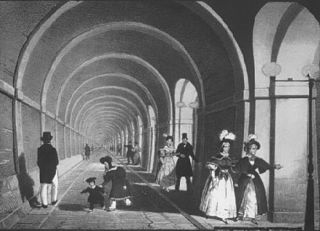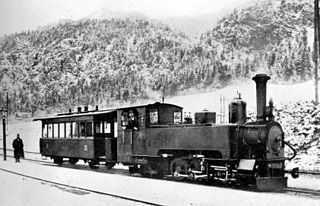Plot
The story is set in an alternate universe and features Isambard Kingdom Brunel; the cover is based on a famous photo of Brunel standing in front of the launching chains for the SS Great Eastern.
Set during the 1840s, the Doctor and his companions arrive during the Industrial Revolution in England, and learn that an inventor has been ordered by an alien force to construct a machine known as the Utopia Engine, a machine that will cause the entire planet to rapidly age. Anybody below the age of puberty will survive, but those above it will age to death.
Brunel, who has unknowingly been supplying parts for this engine, unites with the Doctor to destroy the engine after learning of the post-apocalyptic future the Doctor has foreseen.

Steampunk is a subgenre of science fiction that incorporates retrofuturistic technology and aesthetics inspired by, but not limited to, 19th-century industrial steam-powered machinery. Steampunk works are often set in an alternative history of the Victorian era or the American frontier, where steam power remains in mainstream use, or in a fantasy world that similarly employs steam power.

Stephen Baxter is an English hard science fiction author. He has degrees in mathematics and engineering.

SS Great Britain is a museum ship and former passenger steamship that was advanced for her time. She was the largest passenger ship in the world from 1845 to 1853. She was designed by Isambard Kingdom Brunel (1806–1859), for the Great Western Steamship Company's transatlantic service between Bristol and New York City. While other ships had been built of iron or equipped with a screw propeller, Great Britain was the first to combine these features in a large ocean-going ship. She was the first iron steamer to cross the Atlantic Ocean, which she did in 1845, in 14 days.

Sir Marc Isambard Brunel was a French-British engineer who is most famous for the work he did in Britain. He constructed the Thames Tunnel and was the father of Isambard Kingdom Brunel.

Henry Maudslay was an English machine tool innovator, tool and die maker, and inventor. He is considered a founding father of machine tool technology. His inventions were an important foundation for the Industrial Revolution.

The Difference Engine (1990) is an alternative history novel by William Gibson and Bruce Sterling. It is widely regarded as a book that helped establish the genre conventions of steampunk.

The Thames Tunnel is a tunnel beneath the River Thames in London, connecting Rotherhithe and Wapping. It measures 35 ft (11 m) wide by 20 ft (6.1 m) high and is 1,300 ft (400 m) long, running at a depth of 75 ft (23 m) below the river surface measured at high tide. It is the first tunnel known to have been constructed successfully underneath a navigable river. It was built between 1825 and 1843 by Marc Brunel, and his son, Isambard, using the tunnelling shield newly invented by the elder Brunel and Thomas Cochrane.

The Second Industrial Revolution, also known as the Technological Revolution, was a phase of rapid scientific discovery, standardisation, mass production and industrialisation from the late 19th century into the early 20th century. The First Industrial Revolution, which ended in the middle of the 19th century, was punctuated by a slowdown in important inventions before the Second Industrial Revolution in 1870. Though a number of its events can be traced to earlier innovations in manufacturing, such as the establishment of a machine tool industry, the development of methods for manufacturing interchangeable parts, as well as the invention of the Bessemer process and open hearth furnace to produce steel, later developments heralded the Second Industrial Revolution, which is generally dated between 1870 and 1914.
In criminal law, criminal negligence is an offence that involves a breach of an objective standard of behaviour expected of a defendant. It may be contrasted with strictly liable offences, which do not consider states of mind in determining criminal liability, or offenses that requires mens rea, a mental state of guilt.
Lionel Thomas Caswall Rolt was a prolific English writer and the biographer of major civil engineering figures, including Isambard Kingdom Brunel and Thomas Telford. He is also regarded as one of the pioneers of the leisure cruising industry on Britain's inland waterways, and was an enthusiast for vintage cars and heritage railways. He played a pioneering role in both the canal and railway preservation movements.

The Portsmouth Block Mills form part of the Portsmouth Dockyard at Portsmouth, Hampshire, England, and were built during the Napoleonic Wars to supply the British Royal Navy with pulley blocks. They started the age of mass-production using all-metal machine tools, and are regarded as one of the seminal buildings of the British Industrial Revolution. They are also the site of the first stationary steam engines used by the Admiralty.

The Ice Warriors are a fictional extraterrestrial race of reptilian humanoids in the long-running British science fiction television series Doctor Who. They were originally created by Brian Hayles, first appearing in the 1967 serial The Ice Warriors where they encountered the Second Doctor and his companions Jamie and Victoria. In Doctor Who, the Ice Warriors originated on Mars, which within the series narrative is a dying world. Their early appearances depict the Ice Warriors as attempting to conquer the Earth and escape their planet as early as Earth's Ice Age. A frozen group are discovered by an Earth scientific team, one of whom, Walters, dubs them 'Ice Warriors' in their first appearance. Despite this not being the name of their species, an Ice Lord later refers to his soldiers as Ice Warriors in the 1974 serial The Monster of Peladon. Similarly there is a fleeting reference to themselves as such in The Curse of Peladon. Although originally appearing as villains, subsequent appearances have depicted Ice Warriors that have eschewed violence and even ally themselves with the Doctor. They have also been featured in flashback and cameo appearances, in addition to appearing frequently in spin-off media such as novels and audio releases.
The Ice Warriors is the partly missing third serial of the fifth season of the British science fiction television series Doctor Who, which was first broadcast in six weekly parts from 11 November to 16 December 1967.

Isambard Kingdom Brunel was an English civil engineer and mechanical engineer who is considered "one of the most ingenious and prolific figures in engineering history", "one of the 19th-century engineering giants", and "one of the greatest figures of the Industrial Revolution, [who] changed the face of the English landscape with his groundbreaking designs and ingenious constructions". Brunel built dockyards, the Great Western Railway (GWR), a series of steamships including the first purpose-built transatlantic steamship, and numerous important bridges and tunnels. His designs revolutionised public transport and modern engineering.

The Sleep of Reason is a BBC Books original novel written by Martin Day and based on the long-running British science fiction television series Doctor Who. It features the Eighth Doctor, Fitz and Trix.
"42" is the seventh episode of the third series of British science fiction television series Doctor Who. It was first broadcast on BBC One on 19 May 2007. It was the first episode written by Chris Chibnall, the showrunner and lead writer of Doctor Who from the 11th series to the 2022 specials.

Bryan Donkin FRS FRAS developed the first paper making machine and created the world's first commercial canning factory. These were the basis for large industries that continue to flourish today. Bryan Donkin was involved with Thomas Telford's Caledonian Canal, Marc and Isambard Brunel's Thames Tunnel, and Charles Babbage's computer. He was an advisor to the government and held in high esteem by his peers.

Moon of Mutiny is a juvenile Science fiction novel by author Lester del Rey published in 1961 by Holt, Rinehart & Winston as the final part of the Jim Stanley Series. The story takes place mostly on the Moon following the adventures of the main character Fred Halpern after he is expelled from Goddard Space Academy for insubordination, and tries to find his way back into space.

Snowglobe 7 is a BBC Books original novel written by Mike Tucker and based on the long-running science fiction television series Doctor Who. It features the Tenth Doctor and Martha Jones. It was published on 10 April 2008, alongside Martha in the Mirror and The Many Hands.
William Gravatt FRS, was a noted English civil engineer and scientific instrument maker.















